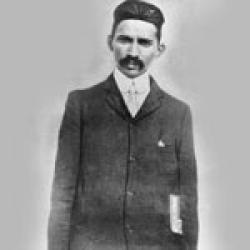
Published date
6 November 1913
On his journey to South Africa in 1893, Mohandas Gandhi had first -hand experience of the discrimination faced by people of colour. His response to this was the establishment of the Natal Indian Congress (NIC) in 1894. Within three years of his arrival in South Africa, Gandhi had become a political leader, providing hope to many Indians who had no political rights under the dispensation of the time. In 1903, he founded a newspaper, the Indian Opinion, in which his ideas on passive resistance or Satyagraha were spread. Some years later, an act was introduced in which all Indians in the Transvaal were required to carry a pass. Under Gandhi's leadership, 3000 Indians protested against the law by refusing to register for their passes. This became known as the 1906 Satyagraha Campaign. By 1913, a tax had been imposed on all former indentured labourers, known as the Indian Relief Bill. In protest of this, Gandhi launched a passive resistance campaign, gaining the support of thousands of mine workers. While leading a march on 6 November 1913, which included 127 women, 57 children and 2037 men, Gandhi was arrested. He was released on bail, rejoined the march and was re-arrested. The Indian Relief Bill was finally scrapped. Gandi returned to India, and through his consistent passive opposition to British rule, led his country to independence. His philosophy on passive resistance was drawn on significantly during the fight against apartheid. The Defiance Campaign in 1952 can be seen as an example of this.
References
South Africa.info,Gandhi's South African legacy [online] Available at: southafrica.info [Accessed 27 October 2009]